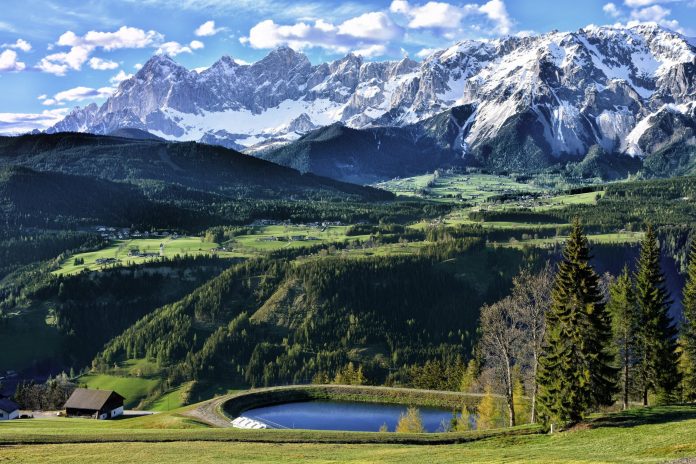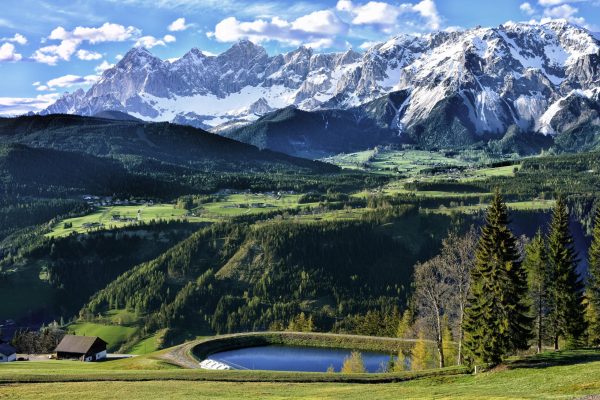Discover the impact of Germany’s mountainous regions, like the Alps, on local ecosystems.
Introduction
The Alps, a majestic mountain range stretching across eight European countries, are not only a popular destination for outdoor enthusiasts and adventurers but also a unique ecosystem with diverse plant and animal life. The range is characterized by its varying altitudes and climates, which have contributed to the development of distinct vegetation zones. In recent years, the effects of global warming have been observed in the Alps, leading to shifts in the distribution of plant species and impacting the delicate balance of this ecosystem.
Impact of Global Warming
The increasing global temperatures have led to the migration of plant species to higher altitudes in the Alps. Researchers in Austria have estimated that the upper limit of plant species in the range has risen approximately three feet per decade since the early 1900s. This phenomenon has resulted in changes in the composition of vegetation at different elevations, with certain species thriving at higher altitudes while others are facing challenges in adapting to the shifting climate.
– List of plant species affected by global warming
– List of animal species impacted by changes in vegetation distribution
By closely examining the impact of global warming on the vegetation of the Alps, we can gain valuable insights into the broader implications of climate change on mountain ecosystems and the measures needed to mitigate its effects.
The physical environment of the mountainous regions
The mountainous regions, such as the Alps, are characterized by their rugged terrain, high altitudes, and diverse climates. The varying elevations create distinct ecological zones, each with its own unique flora and fauna. From the lower slopes with deciduous forests to the alpine meadows and rocky peaks, the physical environment of these regions is shaped by the harsh conditions and extreme weather patterns.
Ecological Zones in the Mountainous Regions
– Deciduous forests on the lower slopes
– Alpine meadows and grasslands
– Rocky peaks and snow-capped summits
The ecological diversity of the mountainous regions provides habitats for a wide range of plant and animal species, each adapted to survive in these challenging environments. The physical environment also plays a crucial role in shaping the cultural and economic activities of the local communities, from agriculture and forestry to tourism and conservation efforts.
Overall, the physical environment of the mountainous regions is a dynamic and complex system that supports a rich and diverse ecosystem, while also presenting unique challenges for both nature and human inhabitants.
Biodiversity and conservation efforts
The biodiversity of the Alps is rich and diverse, with a wide range of plant and animal species inhabiting the region. Efforts to conserve this biodiversity have been ongoing, with the establishment of several national parks and conservation areas to protect the native flora and fauna. These conservation efforts aim to preserve the unique ecosystems of the Alps and ensure the survival of endangered species such as the ibex, brown bear, and bearded vulture. Additionally, initiatives to reduce human impact on the environment, such as sustainable tourism practices and wildlife management programs, are being implemented to safeguard the natural heritage of the region.
Conservation initiatives
– Establishment of national parks and protected areas
– Implementation of sustainable tourism practices
– Wildlife management programs to protect endangered species
– Preservation of native flora and fauna through habitat restoration and conservation projects
Overall, the conservation efforts in the Alps are crucial for maintaining the region’s biodiversity and ensuring the long-term sustainability of its ecosystems. By preserving the natural heritage of the Alps, these initiatives contribute to the protection of valuable species and the promotion of environmental stewardship in the face of increasing human impact on the environment.
Human interaction and sustainable development
The human interaction with the Alps has had both positive and negative impacts on the region’s sustainable development. On one hand, the development of tourism and recreational activities has brought economic benefits to the local communities, creating jobs and opportunities for growth. However, the influx of tourists and the construction of infrastructure such as ski resorts and hotels have also put pressure on the natural environment, leading to issues such as habitat destruction, pollution, and congestion. It is important for stakeholders to find a balance between promoting sustainable tourism and preserving the ecological integrity of the Alps.
Challenges and solutions
– Implementing sustainable tourism practices, such as promoting eco-friendly accommodations and transportation options, and minimizing the environmental impact of recreational activities.
– Encouraging responsible behavior among tourists, such as respecting wildlife and natural habitats, and supporting conservation efforts through education and awareness campaigns.
– Collaborating with local communities, businesses, and government agencies to develop and enforce regulations that protect the natural resources of the Alps while still allowing for economic development and growth.
Overall, human interaction with the Alps presents both challenges and opportunities for sustainable development. By addressing these challenges and working together to find solutions, it is possible to ensure the long-term viability of the region’s natural and cultural heritage.
In conclusion, the mountainous regions in Germany, such as the Alps, have diverse and unique ecosystems that support a wide range of flora and fauna. These ecosystems are vital for maintaining biodiversity and providing essential ecological services.





